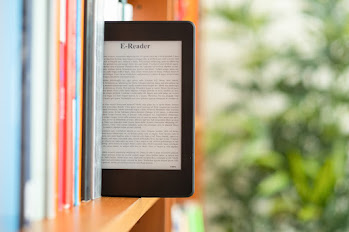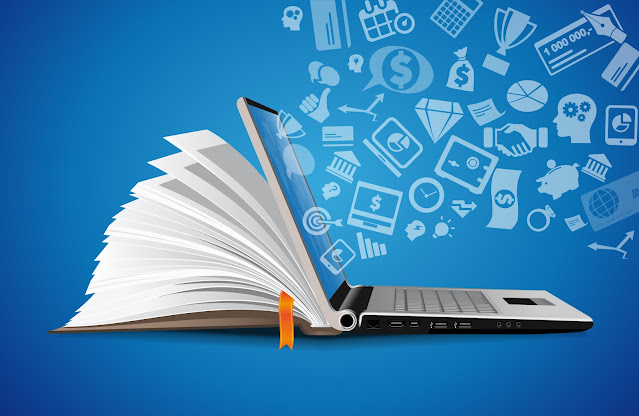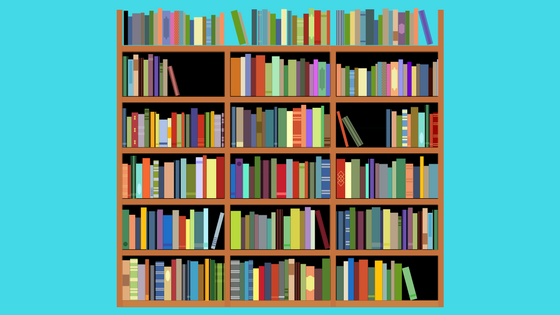Week 11 - Prompt Response
eBooks & eAudiobooks
Appeals and Appeal Factors
eBooks
Regarding eBooks, Dunneback (2011) states, "Any time a new format is introduced in libraries, we need to look at how that format affects the reader's approach to the material" (p. 325). The eBook format affects appeal factors in several ways including, display options, device size and weight, and a story's pacing.
"Display options are the most easily understood component in determining appeal factors in regards to e-book readers" (Dunneback, 2011, p. 327); how e-ink is used, the display resolution quality, and whether or not the device has a touchscreen can all affect how immersive a reading experience can be for the reader. An eReader's size and weight are also important considerations for eBook appeal factors; "...patrons' physical restrictions contribute to a satisfactory reading experience that can be helped or hindered by the reading devices available. Does the patron need to have access to very large type or text-to-speech capability? What if the patron has arthritis and can't hold a heavy device for an extended period of time?" (Dunneback, 2011, p. 327).
Finally, Dunneback (2011) mentions that a story's pacing can be prominently impacted by a digital format, "The reader will need to rely entirely on narrative drive to feel the pace of the story...[pacing] is also affected by how much text is visible on the screen, so the larger the text, the less there is to indicate how quickly the story is moving" (p. 328).
Personally, I agree with all of the factors Dunneback mentions. I prefer using my Kindle Paperwhite, versus the Kindle app on my iPad or phone, because the e-ink used makes it seem more like I am reading print on a page, instead of reading from a screen. However, I do appreciate the page-turn animation offered via the Kindle app, which isn't on my Paperwhite. As for device size and weight, my iPad is closer to the size of the types of books I usually read, but can get heavy after a while if I am holding it like I would a book (rather than resting it on my lap or a stand), whereas my Paperwhite and phone are much lighter, but also much smaller than a standard size book. Regarding pacing, there's nothing quite like making visible progress in a book, getting so close to the end, engrossed in the story, that you end up staying up way past bedtime, compelled to read "just one more chapter"...
eAudiobooks
When discussing audiobooks and their significance as a storytelling form, Cahill and Moore (2017) especially make note of the appeal factors narration and sound elements; "A good narrator ensures congruence of voice with the traits of the characters and manipulates the voice to bring a text to life and to draw in listeners" (p. 23). Immediately, I think of some of my personal favorite narrators (Jim Dale, Susan Ericksen, and Davina Porter) and how this statement rings so true! While I enjoy reading the books myself, these narrators bring the story to life in another, amazing way, and I find myself enthralled by the story on a wholly different level.
"A narrator's decisions about tone, voice, and emphasis can be the determining factor in a listener becoming engrossed in or disengaged from the listening experience" (Cahill & Moore, 2017, p. 24). On the flip side of the narrator enhancing a story for the better, I have also had the experience where I felt the choice of narrator was unsatisfactory - this was for a book which I had already read and enjoyed, and wanted to try listening to it, but was so unhappy with the narrator's reading that I had to stop after only a few minutes of listening.
Cahill and Moore (2017) also bring up a very interesting aspect of audiobooks, "Though voracious readers tend to rush through books, audiobooks force the process to be drawn out, thereby making the experience different from that of reading. A proficient reader might gain a different perspective by listening than by reading" (p. 25).
Another audiobook appeal factor mentioned is sound elements; "Music can amplify the mood or level of intensity associated with a particular scene or event, underscore the pacing of the narration and action, or support the cultural significance of a text...[it] is also used to guide the listener through transitions such as chapter beginnings and endings and shifts in place and time or events in the storyline" (p. 25). This made me think of both the music and sound effects used in the narration of the Anita Blake series audiobooks, where the music used to end chapters and sound effects (like gun fire and fight scene noises) really enhance the atmospheric quality and suspense of what is being read.




The part in the Cahill and Moore article about audiobooks helping people not rush through a book certainly doesn't account for those who set the playback speed to high settings! But it is true that you can't really skim an audiobook.
ReplyDeleteI also appreciate your mention of sound elements in audiobooks. I have had experiences that go both ways. The recording of The Shadow of the Wind by Carlos Ruiz Zafon included music composed by the author which was really cool! The audiobook of Letters from Father Christmas by Tolkien included music between each chapter/letter that was very abrupt and caused me to jump in alarm a few times! But usually sound elements are a positive addition!
I can't imagine listening to a book faster than it's intended to be played! As it is, I feel rushed by audiobooks--I think because if my mind wanders, I lose a sentence or three, and if I'm driving, I can't rewind and re-listen. When I listened to The Silent Patient, a psychological thriller, I lost track of some character and plot details while listening (it was also my first ever audiobook so maybe I just wasn't used to the pacing/concentration ratio yet). I just finished Tom Lake, read artfully by Meryl Streep, which has a leisurely pace throughout (disappointing half my book club who were waiting for something to happen). This was easier to follow. She adjusted her voice a bit for each of the three daughters in the story and one of them was so gravelly it was kind of distracting. I was definitely conscious the entire book that I was listening to Meryl.
ReplyDelete